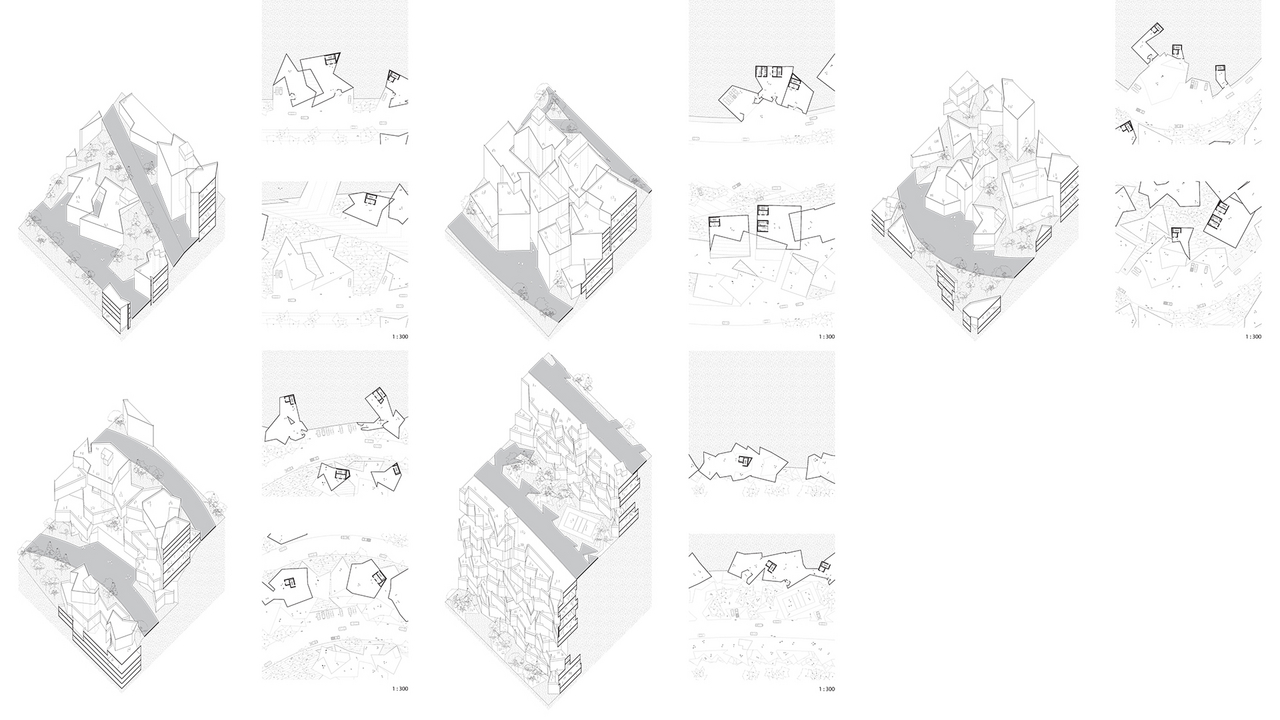Historically, The Ideal City is an impossible problem in Architecture. This project attempts to reconcile the seemingly incompatible dichotomies of top-down/bottom-up designing, the authoritarian hand of the architect/the inherent logics of systems and mappings, and aggregation/dispersal. 16,000 uniquely shaped building units are distributed across an otherwise unoccupied mountainous landscape at the edge of Lima, Peru. These units aggregate or disperse based on mapping algorithms to coalesce into larger building typologies or scatter into lower density urban formations. At all scales, from the city itself to the neighborhood to the individual building, the same formal language of irregular, interconnected forms creates a fractal-like delirium of partially coherent, partially schizophrenic complexity.




